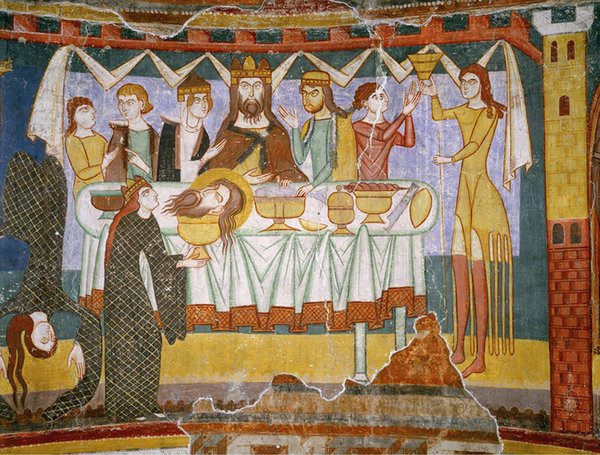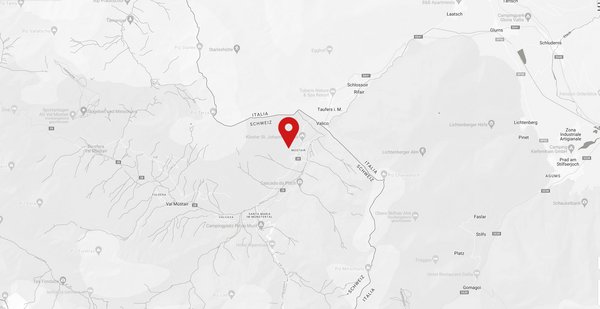
The monks depart, nuns move in
In 1163 Bishop Egino left his residence to the convent of nuns and had a palace and further buildings for his use (imposing roofed hall) built to the north of the Planta Tower. This fact and the discovery of a 12th century bronze prayer bell during excavations confirms that a convent of nuns replaced the community of monks at around that time. The bell bears the following inscription:
+ DVLCEM [·DAT S]ONUM · VENIAT · PIA · TVRBA · SORORUM
“At the sound of its sweet clang, the devout sisters hasten”
Since then there has been a community of nuns living here, in accordance with the monastic rule of St. Benedict, following the motto “ora et labora et lege” (“pray and work and read”).
New frescoes in the convent church
After the arrival of the nuns the choir was covered with new frescoes. Today the luminosity and dynamic of these Romanesque frescoes captivate the onlooker. In the centre we see Herod’s feast with the dance of Salome, the beheading of John the Baptist, the presentation of his head before a bowed Salome and the burial of the saint. The content of the Carolingian frescoes is partially reflected in the Romanesque painting. In contrast to the serenity and composure of the Carolingian painting, the Romanesque narrative is more dynamic and full of detail.












